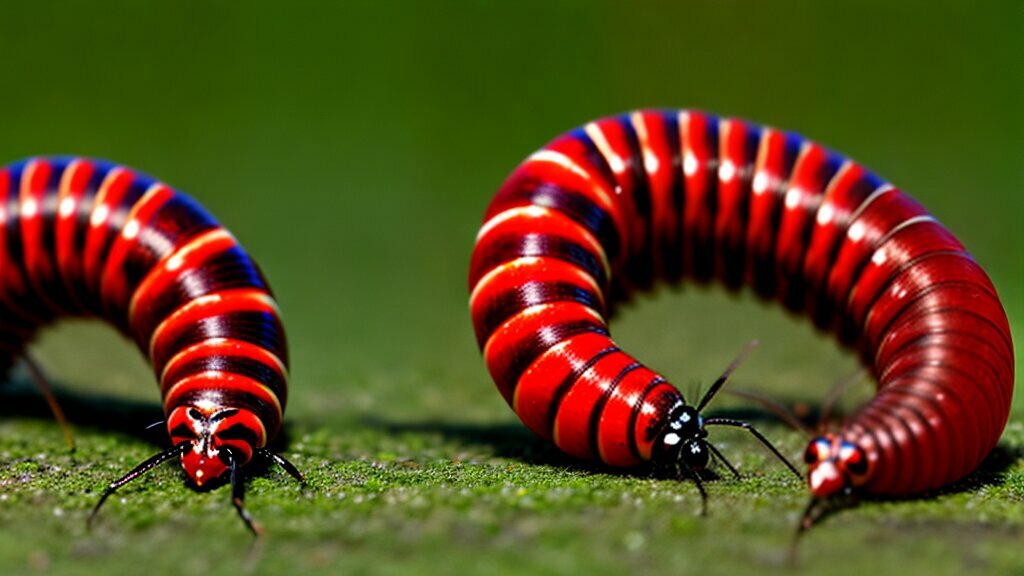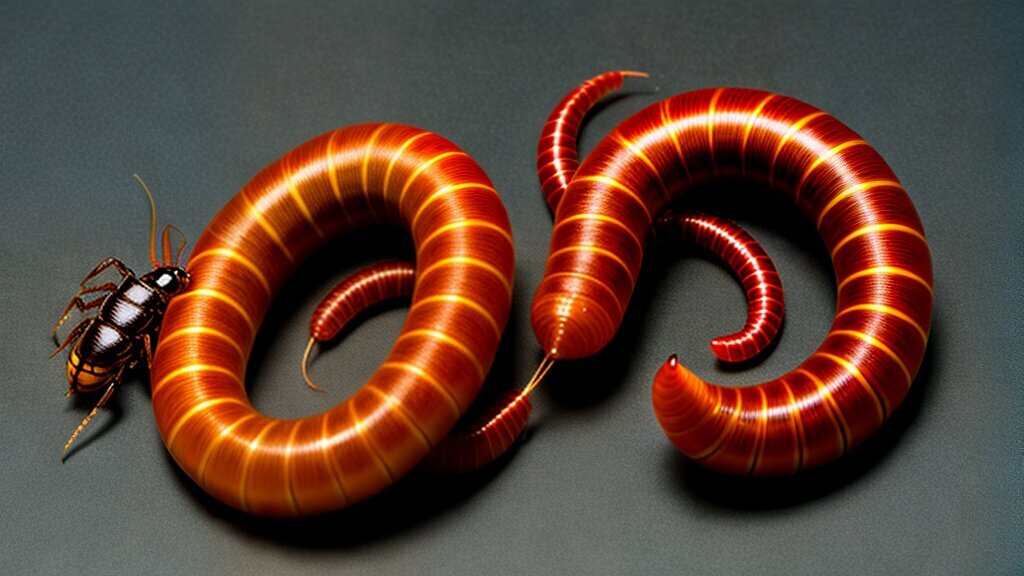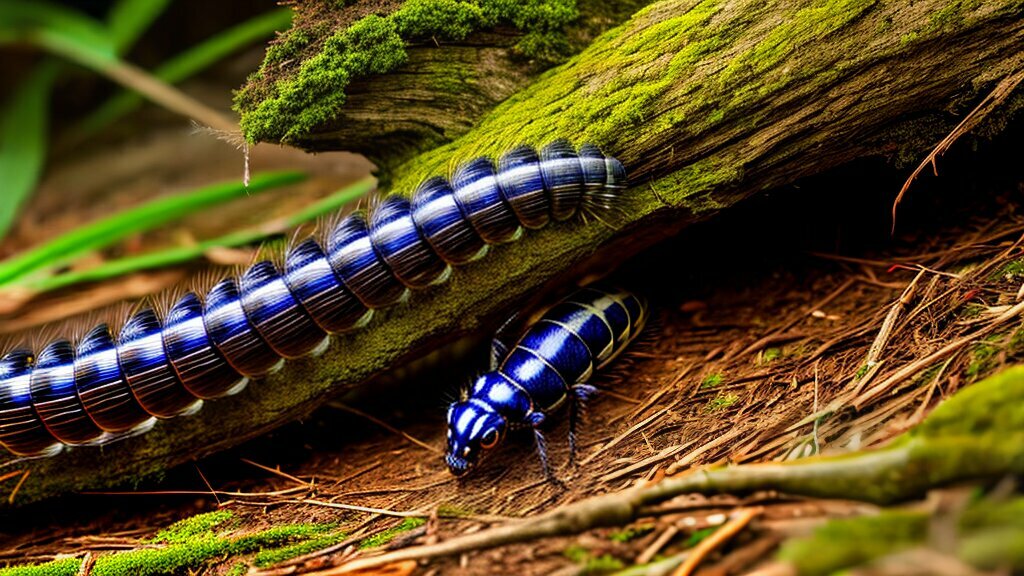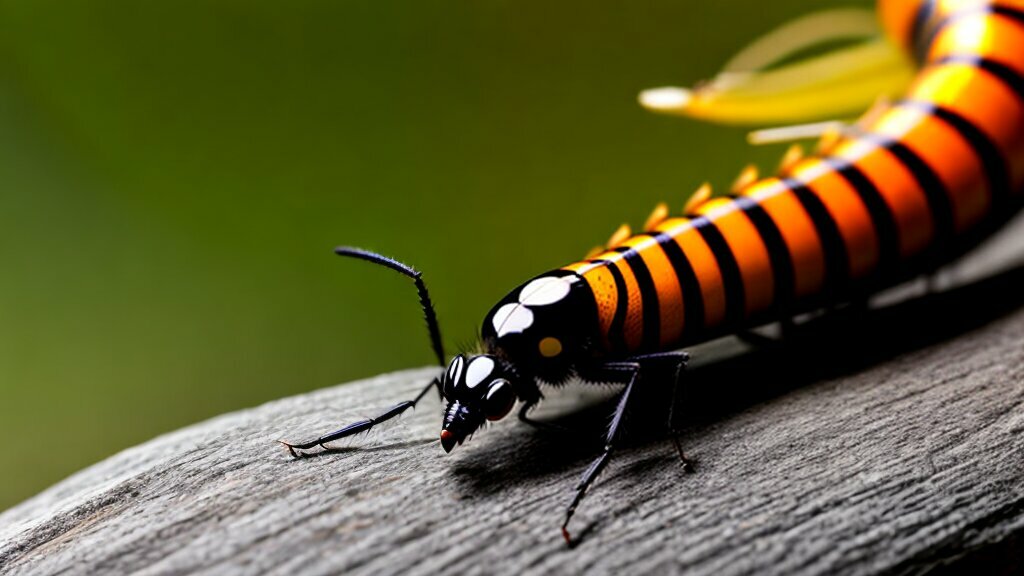Millipedes and centipedes are fascinating creatures that have been the subject of curiosity and study for centuries. One common question that arises when discussing these arthropods is whether millipedes are faster than centipedes. In this article, we will explore the speed and movement capabilities of millipedes and centipedes to determine which of the two is faster.
The idea that millipedes are faster than centipedes is a common misconception. While it is true that some species of millipedes move faster than certain species of centipedes, generalizing their speed is difficult as it can vary based on a range of factors.
Key Takeaways:
- Millipedes and centipedes are both fascinating creatures that have distinct differences in their physical appearance and behavior.
- Examining the anatomy of millipedes and centipedes can help us understand their speed and movement capabilities.
- Determining which of the two is faster is a complex process that requires analyzing various factors such as species, environment, and individual characteristics.
Understanding Millipedes and Centipedes
Before we dive into the speed and movement capabilities of millipedes and centipedes, it’s important to understand their characteristics. Both millipedes and centipedes belong to the subphylum Myriapoda, which comprises animals with many legs. However, they have distinct physical appearances and behaviors.
| Millipedes | Centipedes |
|---|---|
 |
 |
| Millipedes have a cylindrical body and numerous legs, with each body segment having two pairs of legs. Their legs move in a wave-like motion, making them look like they are walking on a treadmill. Millipedes are generally slow-moving and are herbivores, feeding on decomposing plant matter. | Centipedes, on the other hand, have a flattened body and fewer legs. Their body segments each have one pair of legs, and their legs move in an undulating, wavelike motion, similar to the movement of a snake. Centipedes are carnivorous, feeding on insects, spiders, and other small animals. Some centipedes are venomous. |
Overall, millipedes and centipedes have distinct adaptations that allow them to survive in their respective habitats. Understanding their physical characteristics is essential to comprehend how they move and whether they are fast.
Comparative Anatomy of Millipedes and Centipedes
Before we examine the speed and movement capabilities of millipedes and centipedes, it is essential to understand their anatomy. Both creatures belong to the subphylum Myriapoda, but they have distinct differences in their physical characteristics and behavior.
| Millipedes | Centipedes | |
|---|---|---|
| Number of legs | Two pairs of legs per body segment | One pair of legs per body segment |
| Body shape | Cylindrical, elongated | Flattened, elongated |
| Leg position | Legs positioned ventrally | Legs positioned laterally |
| Chewing appendages | Millipedes lack chewing appendages | Centipedes have modified front legs that act as jaws |
Millipedes have two pairs of legs per body segment, while centipedes have one pair of legs per body segment. The legs of millipedes are positioned ventrally, while those of centipedes are located laterally. Additionally, centipedes have modified front legs that act as jaws, while millipedes lack chewing appendages.
Furthermore, millipedes have a cylindrical, elongated body shape, while centipedes have a flattened, elongated body shape. These distinct differences in their anatomy may affect each creature’s speed and movement abilities.
Speed and Movement of Millipedes
Millipedes are fascinating creatures with unique movement capabilities. Though they are often associated with being slow and lumbering, millipedes can move with surprising speed when necessary.
One of the primary factors contributing to millipedes’ speed is their numerous legs and the way they move them. Unlike centipedes, which move their legs in a wave-like motion, millipedes move their legs in pairs, alternating between the left and right sides of their bodies. This movement allows them to move more smoothly and efficiently over uneven terrain and obstacles.
Another factor contributing to millipedes’ speed is their ability to curl into a tight ball, which allows them to roll away from predators or dangerous situations quickly. While in this position, millipedes can move at surprising speeds, especially when rolling downhill.
However, it’s worth noting that not all millipedes are created equal in terms of speed. Some species are much faster than others, depending on their size, environment, and individual characteristics. For example, the giant African millipede can reach speeds of up to 0.8 miles per hour, while other, smaller millipedes may be much slower.
Overall, millipedes may not be known for their speed, but they are capable of moving surprisingly quickly when needed. Their unique movement abilities and adaptations make them an interesting subject for further study and observation.
Speed and Movement of Centipedes
Centipedes are similar to millipedes in their segmented body structure, but there are noticeable differences in how they move. Unlike millipedes that move slowly and steadily, centipedes move very quickly. The movements of centipedes are characterized by a rapid pace and an undulating motion.
Their bodies are long and flat with numerous legs. They use their legs to propel themselves forward quickly. Centipedes have a unique way of moving their legs, which allows them to move quickly and change direction suddenly. They use their legs in a wave-like motion to gain momentum and move forward rapidly.
Centipedes also have a sense of balance that allows them to navigate their environment smoothly. They use their antennae to sense their surroundings and move accordingly. They can quickly adapt to their environment, which allows them to move quickly through tight spaces and around obstacles.
Their speed and agility make centipedes excellent hunters. They can quickly catch their prey and move away before being detected. They are also excellent at avoiding predators because of their speed and agility.
However, the speed of centipedes can also vary depending on the species and environment. Some species of centipedes can move faster than others, and they tend to move faster in warmer temperatures. They also move slower in colder conditions, which can affect their hunting abilities.
Overall, centipedes are known for their speed and agility. Their unique way of moving their legs and their sense of balance make them one of the fastest creatures in the Myriapoda subphylum.
Conclusion
After carefully analyzing the speed and movement capabilities of millipedes and centipedes, it is evident that the answer to “are millipedes faster than centipedes” is not straightforward. While both creatures have unique adaptations that allow them to move efficiently, it is challenging to determine a clear winner in terms of speed.
The speed of millipedes and centipedes can vary depending on various factors, including species, environment, and individual characteristics. Some millipedes can move faster than centipedes, while others may be slower. Additionally, some centipedes may be faster than millipedes due to their longer legs and more significant muscle mass.
FAQ
Q: Are millipedes faster than centipedes?
A: The speed and movement capabilities of millipedes and centipedes are not straightforward to compare. Various factors, including species, environment, and individual characteristics, can influence their speed.
Q: What are the characteristics of millipedes and centipedes?
A: Millipedes and centipedes are both arthropods belonging to the subphylum Myriapoda. However, they have distinct differences in their physical appearance and behavior.
Q: What is the anatomy of millipedes and centipedes?
A: To determine the factors that contribute to their speed, it is essential to examine the anatomy of millipedes and centipedes. This section provides an overview of their anatomical features that may affect their speed.
Q: How fast do millipedes move?
A: This section focuses on the speed and movement capabilities of millipedes. By analyzing their locomotion techniques and behavior, we can better understand whether millipedes are faster than centipedes.
Q: How fast do centipedes move?
A: In this section, we will examine the speed and movement abilities of centipedes. By understanding how they navigate their environment, we can compare them to millipedes and determine which of the two is faster.




